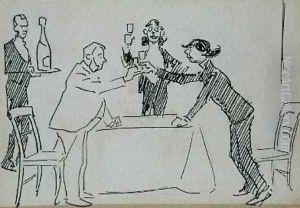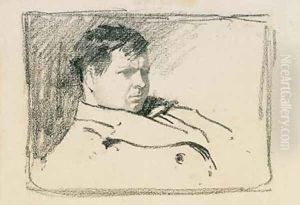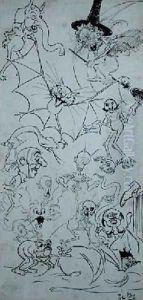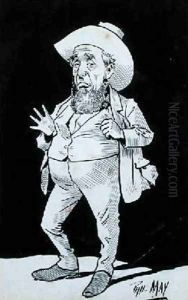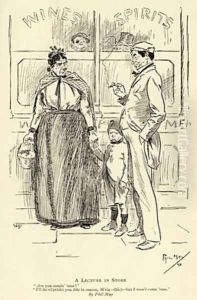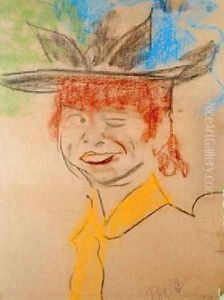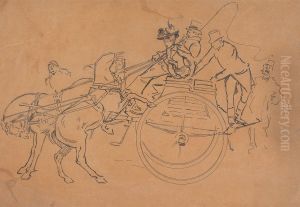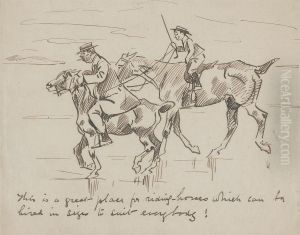Phil May Paintings
Phil May was a British cartoonist and caricaturist, celebrated for his astute observations of late Victorian and Edwardian society, distinguished by a minimalist style that emphasized economy of line. Born Philip William May on April 22, 1864, in Leeds, England, May's upbringing was modest and challenging. His father died when he was young, leading to financial struggles that forced May to leave school at the age of 12 and seek employment. Despite these early obstacles, May demonstrated an innate talent for drawing, which would pave the way for his future career.
May's professional journey began with menial jobs, but his passion for art led him to London and subsequently to Australia, where he worked for the Sydney Bulletin. It was here that May began to refine his distinctive style, marked by a reductionist approach that stripped away unnecessary details to focus on the essence of character and form. This period was crucial in developing the skills that would later define his work.
Returning to London in the early 1890s, May's career flourished. He became associated with Punch magazine, a leading journal of humor and satire, where his social caricatures and cartoons gained widespread acclaim. May's ability to capture the quirks and follies of everyday people and society figures alike, with both humor and a degree of sympathy, resonated with readers. His work was characterized by an uncanny ability to convey personalities and situations with just a few deft strokes.
Throughout his career, May was prolific, contributing to various publications and producing several books of his cartoons. Despite his success, he struggled with health issues, exacerbated by a lifestyle that included heavy drinking. Phil May's life was cut short when he died on August 5, 1903, at the age of 39. His legacy, however, endures through his innovative contributions to the art of caricature and cartooning. May's influence can be seen in the work of subsequent generations of cartoonists, who have drawn inspiration from his emphasis on simplicity and expressiveness. His work remains a testament to the power of observation and the enduring appeal of satire.
